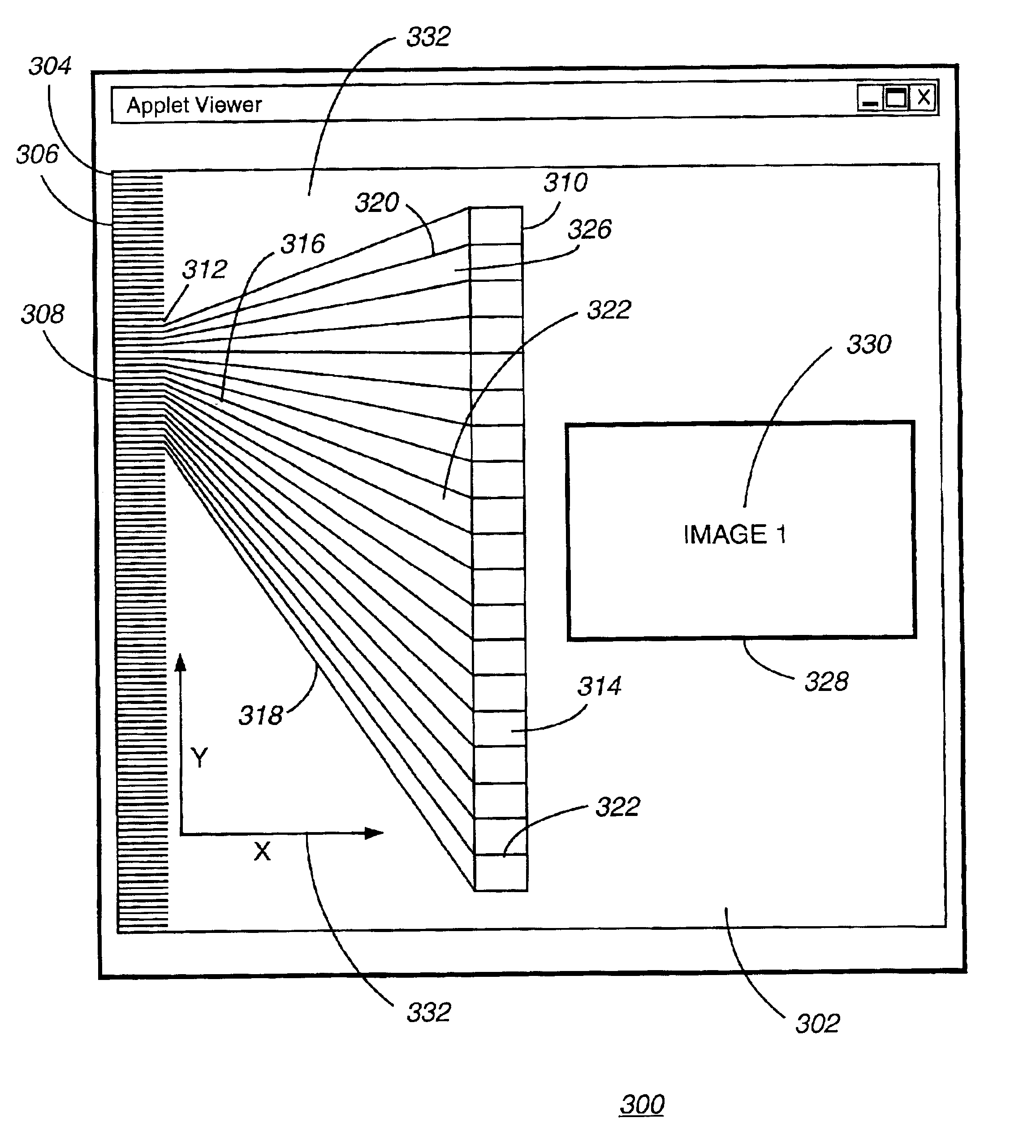Method and apparatus for variable density scroll area
a scroll area and variable density technology, applied in the field of scrollable graphical user interfaces, can solve the problems of data sets that are difficult to access using standard techniques, lose the context of the source of information, and "get lost" in the data
- Summary
- Abstract
- Description
- Claims
- Application Information
AI Technical Summary
Benefits of technology
Problems solved by technology
Method used
Image
Examples
second embodiment
By using the present invention, the user is provided additional positional context for the information they are browsing and allows for rapid browsing through large data sets thereby providing a more usable interface. Two embodiments are described in the following sections. In the first, the 2-D scroll area is a continuous area. In this continuous embodiment the user can change the scroll resolution on a continuous scale. The second embodiment uses a set of discrete vertical scrolling bars. These scrolling bars work in concert to fine tune the scrolling access to the data.
exemplary continuous scrolling embodiment
A technique is described now for continuous variable density scroll area (VDSA) to assist in the browsing of a multimedia data set of still images, video, audio and text. This technique actively supports the user in the browsing task by quickly scrolling through large amounts of data. Moreover, the present technique permits the user to easily change the resolution of the scrolling action.
Turning now to FIG. 3 is a display screen 300 on a display device (not shown) coupled to the display driver 114 of the information processing system 100 of FIG. 1. An application window 302 running as a standalone application 208, an operating system service 206 or in another embodiment a plugin to a web browser such as Microsoft Internet Explorer or Netscape Navigator is shown. In this embodiment three distinct regions of the screen are illustrated which are now described. The first region 304 provides a series of indicators 306 where the number of the indicators 306 are set to correspond to the nu...
embodiment 310
FIG. 8 is flow diagram 800 for carrying out the discrete and continuous scrolling according to the present invention. The process flow begins with pointers to the data set being initialized in steps 802, and 804. The initial active states is set to the first element in the database or data set. Next, the current state is set and this will enable animation when the system comes up. In step 806, the first scroll area dividing number of elements by vertical resolution. And in step 808 the second scroll area (304 or 604) setting size to number of element to be visible to user. The interface of the current state is now drawn in step 810 and this begins a loop. This is different for discrete embodiment 610 versus the continuous A test is made in step 812 to determine if the current state the active state, or stated differently is the selected current indicator by the user equal to previous current indicator. If it is not the position is recalculated and adjusted to the present values in ...
PUM
 Login to View More
Login to View More Abstract
Description
Claims
Application Information
 Login to View More
Login to View More - R&D
- Intellectual Property
- Life Sciences
- Materials
- Tech Scout
- Unparalleled Data Quality
- Higher Quality Content
- 60% Fewer Hallucinations
Browse by: Latest US Patents, China's latest patents, Technical Efficacy Thesaurus, Application Domain, Technology Topic, Popular Technical Reports.
© 2025 PatSnap. All rights reserved.Legal|Privacy policy|Modern Slavery Act Transparency Statement|Sitemap|About US| Contact US: help@patsnap.com



